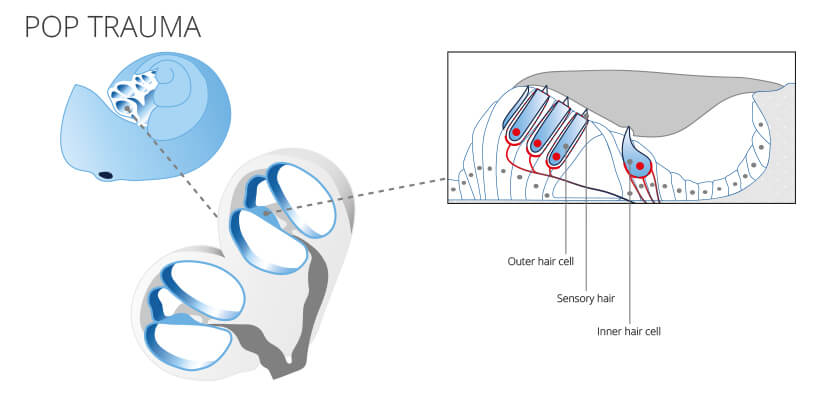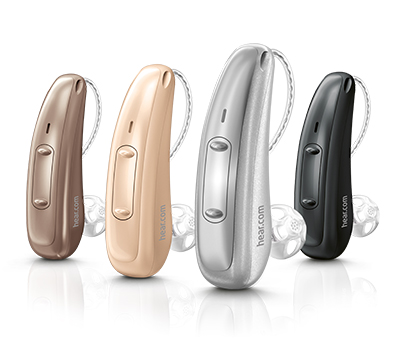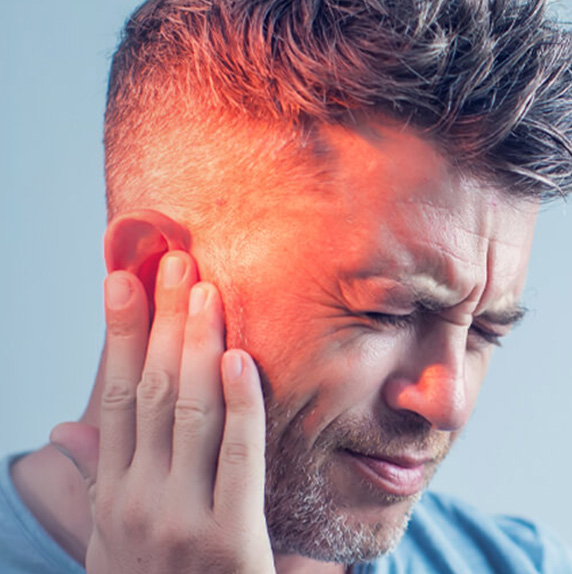
hear.com – India’s leading destination for advanced hearing aids & expert care
Pop trauma
Symptoms, Diagnosis & Treatment
Pop trauma is a form of acoustic trauma. An acoustic trauma is when the hair cells in the organ of Corti of the inner ear are damaged. This damage is caused by the effect of increased sound pressure on the ear. If the sound pressure exceeds a certain threshold, the ear can no longer adapt and is damaged. A bang trauma occurs above all when the damaging sound has a very short effect (approx. 1-2 ms).
In this article you will find important information about bang trauma. You will learn about its causes and what the symptoms may be. It also explains how the doctor makes the diagnosis and what therapy is available.
Table of Contents
- Symptoms of pop trauma
- What causes pop trauma
- Diagnosis: pop trauma
- Therapy
- Pop trauma and hearing aids
- Forecast

Pop trauma symptoms
Patients typically complain of a feeling like an ear is blocked and of hearing loss in the affected ear. Other possible symptoms are tinnitus (ringing in the ears), hyperacusis (hypersensitivity to noise), dizziness and impaired balance.
The pop trauma usually affects only one side and the symptoms improve in the first few days. In general, no progression of the symptoms is to be expected.
Causes of pop trauma
The causes of acoustic trauma can be varied. Examples are gunshots, firecrackers, airbags, explosions, lightning strikes, and also a strong blow to the ear.
These stressors lead to damage to the hair cells due to a disturbance in their metabolism. There is a lack of oxygen and the formation of free radicals, but mechanical damage can also occur. The basal area of the snail and thus the high-frequency range is affected first.
Diagnosis: pop trauma
To diagnose a pop trauma, the ENT doctor prepares an auditory curve. This audiogram can be used to detect sensorineural hearing loss. There is either a dip at 4,000 Hz or a drop in the curve for tones with high frequencies. If the SISI test (Short Increment Sensitivity Index) is positive, there is a positive recruitment. This means that the range between the hearing threshold and the discomfort threshold of the hearing area is smaller than for people with normal hearing.
This speedy increase in loudness can be explained by the damage to the outer hair cells. In healthy people, the outer hair cells modify the sound. They amplify soft tones and weaken loud tones so that it is possible to perceive a very wide range of tones.
No otoacoustic emissions can be measured in the damaged frequency range. These emissions are also based on the function of the outer hair cells and therefore do not apply to patients with damage to the hair cells in the corresponding frequency range. However, this test is typically carried out 1 week after the traumatic event due to its additional noise exposure.
Therapy
As an initial therapeutic measure (as in the case of sudden hearing loss), a hemorheological infusion therapy with HAAES (hydroxyethyl starch) and procaine is used. Cortisone can also be administered. If both of these therapies fail, hyperbaric oxygen therapy is indicated.
In any case, starting therapy early is crucial for the prognosis. The earlier therapy is started, the lower the risk of permanent damage.
Surgical therapy is only carried out if one or both windows in the inner ear are damaged or a perilymphatic fistula has developed. This is a pathological connection between the perilymphatic space (surrounding the sensory cells of the hearing organ) and the middle ear. An opening of the eardrum (tympanotomy) is performed and damaged windows or an existing fistula is repaired.
Pop trauma and hearing aids
If the pop trauma continues, it usually leads to hearing damage in the high frequency range. This can be annoying for the person concerned, especially in noisy environments. In the case of permanent impact trauma, a hearing aid usually helps to be able to perceive high tones again.
Forecast
The prognosis of a pop trauma is generally very good. As a rule, the symptoms improve within 6 weeks of the event – often until complete recovery. Complaints that persist after 6 weeks, however, have a poor prognosis and can then often no longer be treated.
Hearing aids & pop trauma
Do hearing aids help with a pop trauma?

A constant blast trauma usually leads to hearing loss in the high frequency range, which can be compensated for by hearing aids:
- high tones that are no longer audible can be heard again
- Improving hearing especially in noisy environments
- Increase in quality of life





